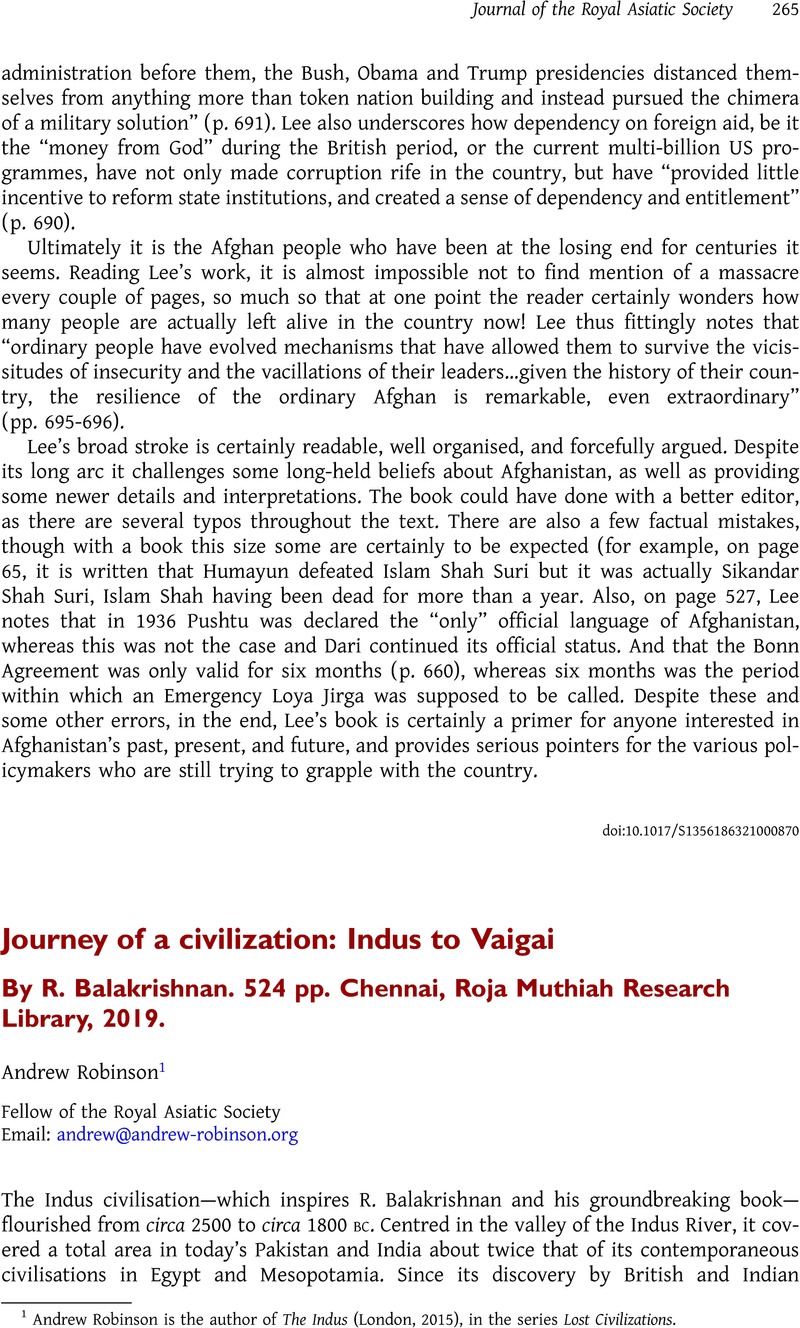No CrossRef data available.
Article contents
Journey of a civilization: Indus to Vaigai By R. Balakrishnan. 524 pp. Chennai, Roja Muthiah Research Library, 2019.
Review products
Journey of a civilization: Indus to Vaigai By R. Balakrishnan. 524 pp. Chennai, Roja Muthiah Research Library, 2019.
Published online by Cambridge University Press: 06 April 2022
Abstract
An abstract is not available for this content so a preview has been provided. Please use the Get access link above for information on how to access this content.

- Type
- Book Review
- Information
- Copyright
- Copyright © The Author(s), 2022. Published by Cambridge University Press on behalf of The Royal Asiatic Society
Footnotes
1
Andrew Robinson is the author of The Indus (London, 2015), in the series Lost Civilizations.
References
2 Parpola, Asko, Deciphering the Indus Script (Cambridge, 1994), p. 57Google Scholar.



